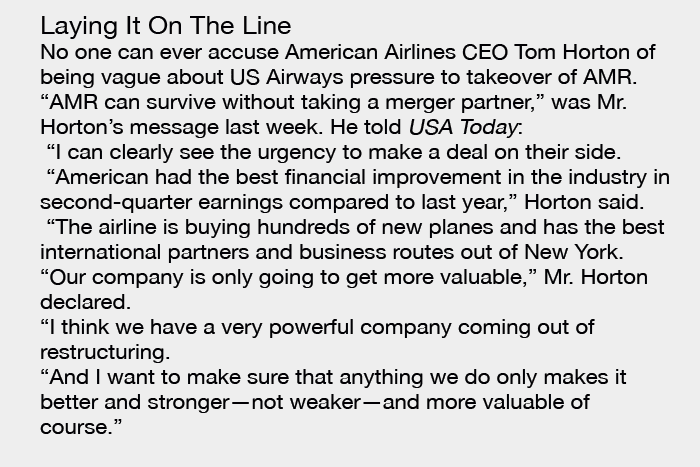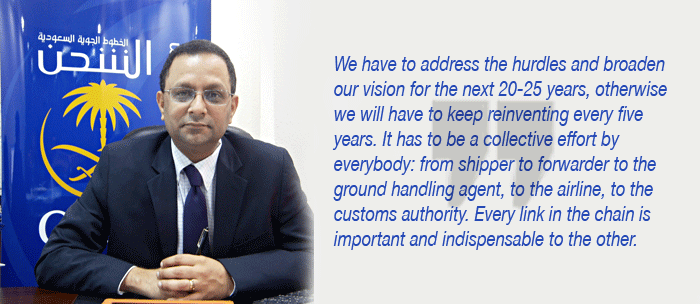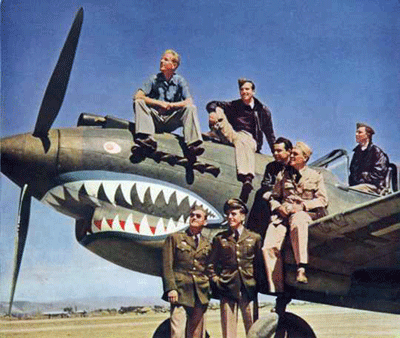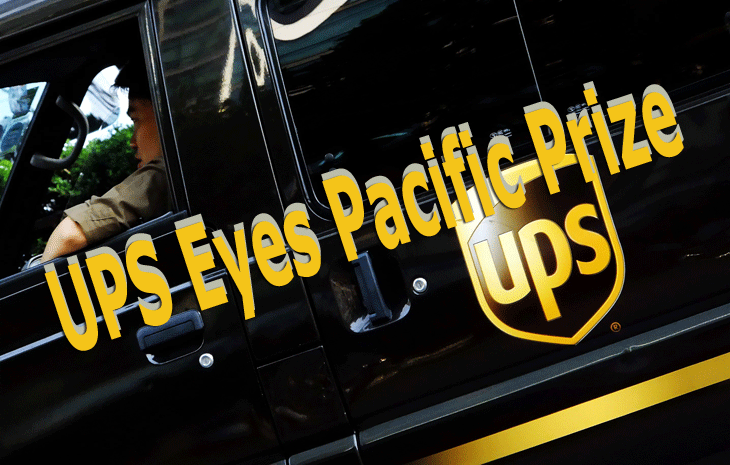 |
 |
|
| |
||
|
Vol. 11 No. 70 Tuesday July 24, 2012 |
 
|
Brendan Canavan,
the newly appointed president of UPS Asia Pacific,
has no doubts about where integrators will see
the fastest growth in the years ahead.
|
 |
Previously,
Canavan served as president of UPS’s North-East
District in Europe, based in Brussels, where
he led the realignment of the company’s
operations and the acquisition of Stolica, a
leading parcel and express delivery service
in Poland. Prior to that he managed Worldport
in Louisville, where he oversaw the integration
of Menlo Worldwide Forwarding, which UPS acquired
in 2004.
Canavan concedes
that realizing Asia’s huge potential for
UPS will require overcoming a number of challenges
in the current economic climate. “The
slow global economic conditions are an immediate
concern and we are working diligently to maintain
our service levels profitably,” he said.
“But in the long-term, we are focused
on improving our intra-Asia and global network,
rolling out technology enhancements such as
the new DIAD V, innovating new logistics solutions
for our Asian customers, as well as developing
and retaining our talent.”
This, he says,
explains why UPS invested heavily in two Asian
air cargo and express hubs at Shanghai and Shenzhen
even during the recession. “We expected
to reap the benefits of being ready when the
economy recovers,” he said.
He highlights
the rapid growth of the intra-Asia trade as
an area where expectations at UPS are high,
pointing out that volumes continue to grow faster
than trade with the rest of the world and already
account for more than 50 percent of all exports
in the region.
“As per
UPS’s Change in the Chain survey in 2011,
high-tech companies, for instance, are in favor
of intra-Asia trade and are focused on fulfilling
growth demand within the region,” he said.
“Trading plans in the next five years
show that more than half of the trade lanes
used by these companies will be primarily intra-Asia.
“With this
in mind, I remain cautiously optimistic of the
region’s growth and I’d like to
focus on developing our capabilities within
Asia, which include network enhancements within
our Asia lanes, technology expansion and building
healthcare solutions.”
UPS’s Asia
Pacific hubs are located in Shanghai, Shenzhen,
and Hong Kong, and the company currently has
an aircraft fleet of about 29 aircraft in the
region, with over 230 weekly flight segments
within Asia and over 160 international routes.
In total these flights serve over 20 airports
in Asia and over 370 internationally.
Canavan said UPS’s
brand has it well positioned to tap into demand
from Asia’s fast-growing middle class.
“It’s
projected that by 2020 more than 1 billion consumers
will come from China and India alone and UPS
is going to be prepared to serve those consumers,”
he said.
Most focus will
center on China, particularly its fast-growing
interior markets. “We grow and invest
wherever our customers need us to be,”
said Canavan. “We have long been exploring
expansion in tier 2 and 3 cities in China because
of their growth potential.”
The Chinese government,
which had been active in building infrastructure
that supports the logistics and transportation
sector, is encouraging this, he says.
“According
to China’s 12th Five Year Plan, the government
is working on enhancing its road and rail network,”
he added. “Some key targets include the
construction of a highway network to reach 83,000km
and the length of a high-speed railway to reach
45,000km—and plans to invest more than
RMB 1.5 trillion in developing the aviation
industry.
“All this
bodes well for UPS, which has invested over
USD$900 million in China since 2002.”
Apart from its
hubs for the region, UPS also uses six gateways
specifically for China located at Chengdu, Beijing,
Guangzhou, Qingdao, Shanghai, and Shenzhen.
“Our current infrastructure enables us
to serve more than 330 cities in China and we
are still on the lookout to do more,”
he said.
He identified
Chengdu as one of the main cities that is benefitting
from China’s ‘Go West’ campaign
to develop interior areas.
“Tax and
investment initiatives from the Chinese government
have seen many MNCs set up shop in this dynamic
city, making it a focal point of high technology
manufacturing,” he said.
“As trade
flow in the region increased tremendously, so
did the need for smart logistics solutions required
to facilitate it.
“Last year
we began operating flights out of Chengdu, and
we were the first international express carrier
to operate out of the Chengdu Shuangliu International
Airport. UPS’s Chengdu gateway will boost
the connectivity for western China’s business
and manufacturing communities to the world.”
SkyKing
 |
When
Saudia Airlines Cargo Company appointed Keku
Gazder as Regional Director Cargo for the
Indian Subcontinent three months ago, the
air cargo industry in India sat up and took
notice. The move simply meant that Saudia
was going to be a serious player in the Indian
market.
|
 |
When asked about
programs and plans, Gazder pointed out, “We
will get back the market share that we deserve.
You are aware that we are now privatized.
The impact of that is that we are very vigorously
and actively pursuing opportunities.
“We have
forged great partnerships with a lot of forwarder
partners all over the country and across the
region that I represent. This area is the
largest market for Belly Capacity in the SV
world. Therefore, we are looking at going
into the market with a product or a service
we truly believe benefits our partners. We
have on an average twelve passenger flights
in the region and fly to Dammam, Riyadh and
Jeddah.
“If I
look country-wise, we fly from Sri Lanka and
Bangladesh. In Pakistan, we have Islamabad,
Karachi, Lahore and Peshawar.” In India,
Saudia flies to Mumbai, Delhi, Lucknow, Hyderabad,
Bengaluru, Kochi, Calicut, and Trivandrum,
while its freighter destinations are at Mumbai,
Trivandrum, and Dhaka in Bangladesh.
Saudia Cargo
is committed to the subcontinent and Gazder
emphasized that fact with an example.
“We are
a very strong player in the Dhaka market where,
in addition to passenger flights we operate
two weekly freighters to Dhaka. We have added
a third weekly freighter into this market.
That sort of gives you an idea of how keen
we are on the Bangladesh market. Our partners
have realized that we are a serious player
and we are here for the long run.”
So is Saudia
Cargo in the race to be the mightiest?
“With
145 passenger aircraft and 13 freighters:
Definitely yes!” said Gazder.
Carrying around
7,000 tonnes per month from the region, Saudia
Cargo is planning to put in more capacity
in India.
“For sure,
we want to grow in India. We see more opportunities
for growth. We want to be sure about the opportunities
that we have in India.”
He emphasized,
“We do not want to step into the market
where there is a temporary boom. That is not
our strategy. We want to grow and develop
the market for a sustainable period of time.”
Despite the infrastructural hurdles, Saudia
is looking at the big picture.
Speaking to
air cargo stakeholders, Gazder said, “we
have to address the hurdles and broaden our
vision for the next 20-25 years, otherwise
we will have to keep reinventing every five
years. It has to be a collective effort by
everybody: from shipper to forwarder to the
ground handling agent, to the airline, to
the customs authority. Every link in the chain
is important and indispensable to the other.”
Tirthankar Ghosh
Get
On Board Air Cargo News FlyingTypers |
While BBI may
have flubbed its opening plan to move from Tegel
to a new Berlin Schonefeld facility last month,
China's Changshui International Airport debuted
June 28, revealing the fourth largest airport
building in China following the transfer of
operations from the city’s Wujiaba Airport.
|
 |
 |
Claire Booth Luce snapped this
early color photograph in Kunming for
Life Magazine during the early 1940s as
the legend of the exploits of the Flying
Tigers was born. John Wayne (pictured
with co-star Anna Lee) starred in the
movie The Flying Tigers |
These pilots and
their fragile early transport aircraft operating
at max ceiling kept the AVG supplied with av–gas,
tires, ammunition, and other supplies.
Conditions were
so dangerous with those mountain updrafts that
wreckage of those early all-cargo airplanes
reported lost during the early 1940s is still
being discovered, as recently as a few years
ago.
Although the heroics
of the transport pilots who supported and were
rightfully called “Flying Tigers”
is often overlooked, their contributions left
a worldwide, lasting legacy and introduced the
world to the prospects of air cargo, including
the “can-do” attitude that launched
“The Berlin Airlift” and The Flying
Tiger Line air cargo company, which operated
freighters all over Asia before being bought
by FedEx.
Today, many FedEx
Asian flights travel aerial trade lanes pioneered
by Flying Tigers air cargo pilots and crew.
Reportedly, a
new film is in the works about the Flying Tigers
by director John Woo, who is said to be looking
for Tom Cruise as lead actor.
The movie, with
the working title Flying Tiger Heroes has a
projected budget of US$100 million and will
reportedly be the most expensive movie ever
made in China.
Woo has said the
film will contain “the most spectacular
aerial battle scenes ever seen in Chinese cinema.”
He added that
the movie “will highlight the spirit of
Yunnan culture as well as Chinese heroes from
World War II and the U.S.-China friendship that
led to the founding of the Flying Tigers”.
It is also worth
mentioning that the publication that you are
reading worldwide today called “Flying
Typers” can trace its name back to the
days of the AVG.
| Often
people inquire as to our name FlyingTypers.
“Don’t you mean Flying Tigers,”
is a comment we have heard. Actually during WW II Flying Tigers were both fighter pilots (P40) and air transport pilots (C46 & C47) as well. Our publication title is genuine. It dates back to the days of the AVG, when during the long trek over the mountains, the pilots got to know another determined group of people, the first air cargo journalists who worked for Time & Life and Yank Magazine, The New York Herald Tribune, Stars and Stripes and others. Along with their regular kit, these reporters brought along the essential tool of their trade, a small portable typewriter in a black case—the 1940's version of the laptop computer of today. Our Contributing Editor, Ed "Ansel " Talbert, who served as top aviation editor of The New York Herald Tribune, and a founder of The Wings Club recalled: “Preparing for a flight, a pilot looking out the left seat window at some reporters as they trudged their way toward his aircraft to cover the story said to the co-pilot: “Here come those flying typers.” We are proud to carry the name FlyingTypers as we pioneer this 21st Century Ezine worldwide thrice weekly. We are also dedicated to never forget the people and events that shaped our great industry. |
If
You Missed Any Of The Previous 3 Issues Of FlyingTypers
|
|||||
|
|||||
FT071712 |
FT072012 |
||||
|---|---|---|---|---|---|








